Stuck between engineered vs sintered stone surfaces? Kitchen experts explain the most stylish and practical choice for your home
Weighing up engineered vs sintered stone surfaces? Our guide is here to help you compare the two


When comparing engineered vs sintered stone work surfaces, there is much to consider, such as maintenance, costs, durability, and more.
If you have narrowed down your kitchen worktop ideas to these two options, your next step should be to look into the pros and cons of each and how they will benefit your individual space.
This is where our guide comes in. We asked the experts to explain the similarities and differences between these two worktop materials as well as what homeowners installing them can expect in terms of both appearance and practicality.
Engineered stone surfaces
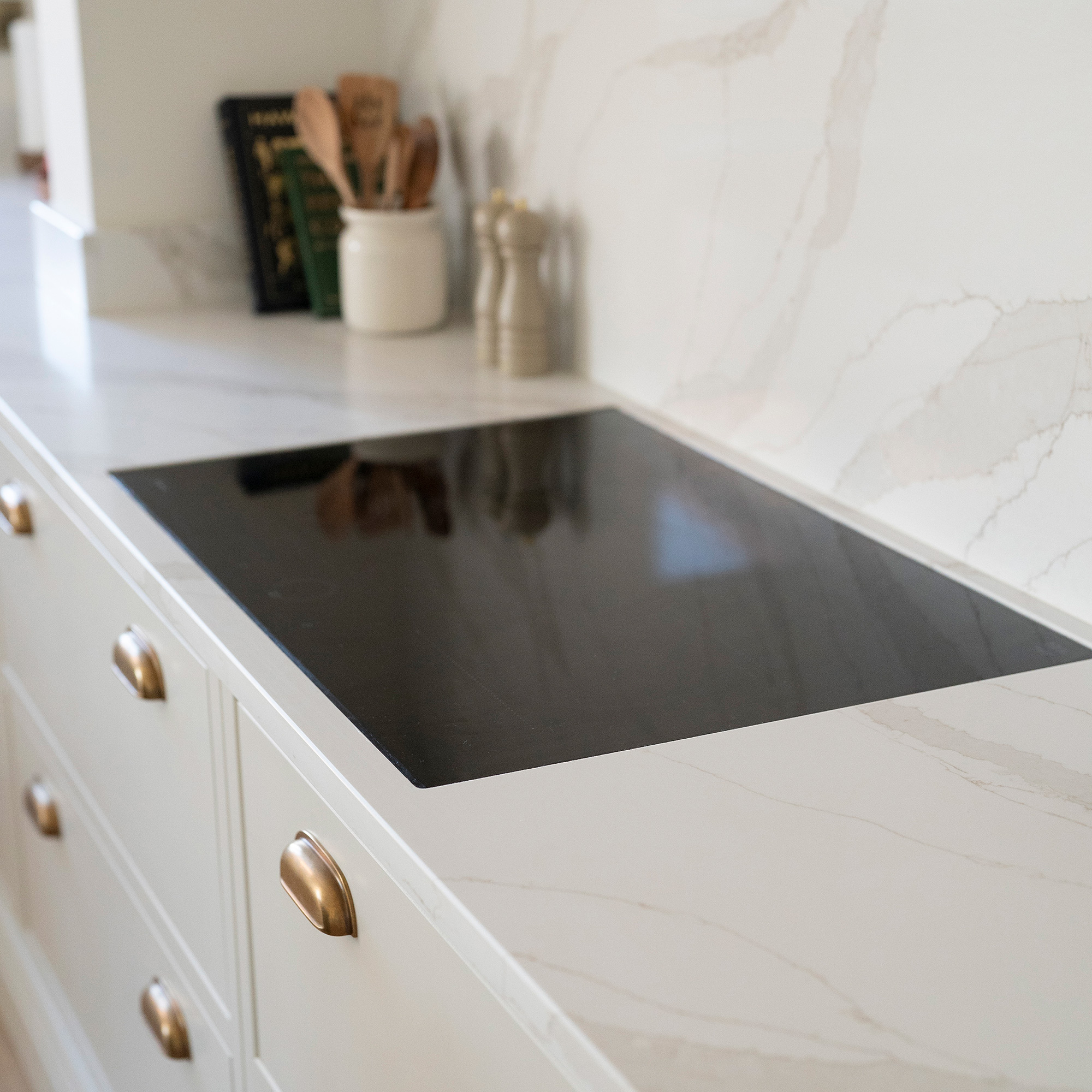
We'll begin by taking a look at engineered stone surfaces – one of those kitchen worktop trends that seems eternally popular. Although they can be made using various materials, they are most commonly composed of crushed natural stone – most often quartz but sometimes marble or granite – mixed with a number of other components.
'A quartz worktop is made from quartz stones, resin and pigments,' explain the experts at Paramount Stone Specialists. 'The resin used can be natural but in most cases they are synthetic. The pigments are used to alter the colour aesthetic of the worktop, and they are optional.'
Pros of engineered stone surfaces
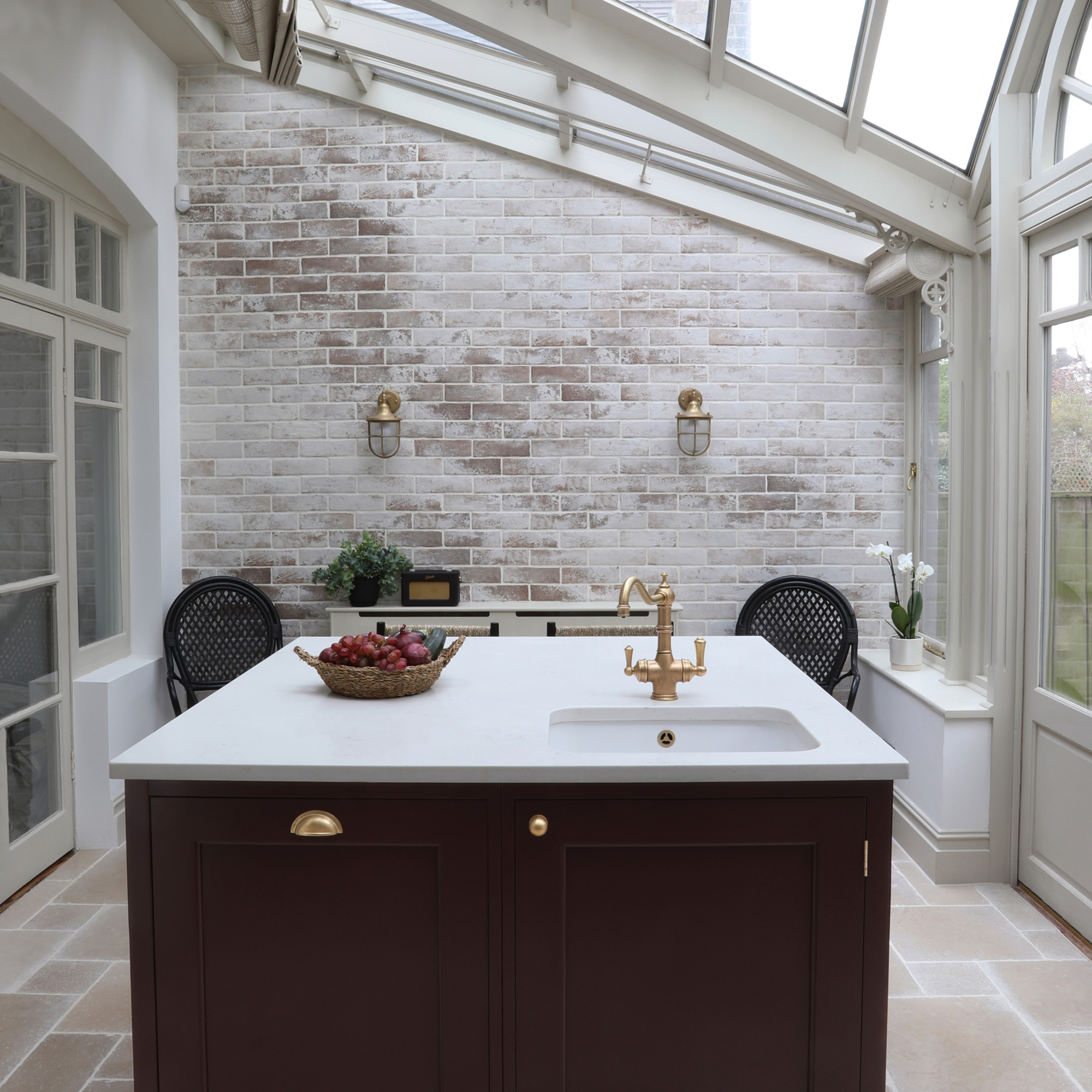
If you choose an engineered stone work surface as part of your kitchen ideas, what benefits could you enjoy?
'There are many advantages of engineered worktops,' says Al Bruce, founder of Olive & Barr. 'Family-friendly, quartz is a non-porous material, its texture does not allow bacteria to grow and it resists stains – ideal for maintaining a clean kitchen. For this reason, quartz worktops are never required to be sealed.'
While practicality should be a huge factor when choosing worktops, appearance is undoubtedly important too.
'Quartz is available in a wide range of styles,' says Al Bruce. 'Small pieces of glass or metallic flecks are added to create a beautiful finish, therefore they are a perfect choice for the design conscious.'
Pros of engineered stone worktops:
- Lower cost than sintered
- Durable and stain resistant
- Low maintenance
- Consistent appearance
- Available in a huge range of patterns and colours
Cons of engineered stone surfaces
As when choosing any element of your kitchen decor, it is important to be aware of both the pros and cons if you want to ensure you are making an informed decision.
Cons of engineered stone surfaces:
- More expensive than timber or laminate
- Not as heat resistant as sintered
- Slightly lower life expectancy than sintered
Sintered stone surfaces
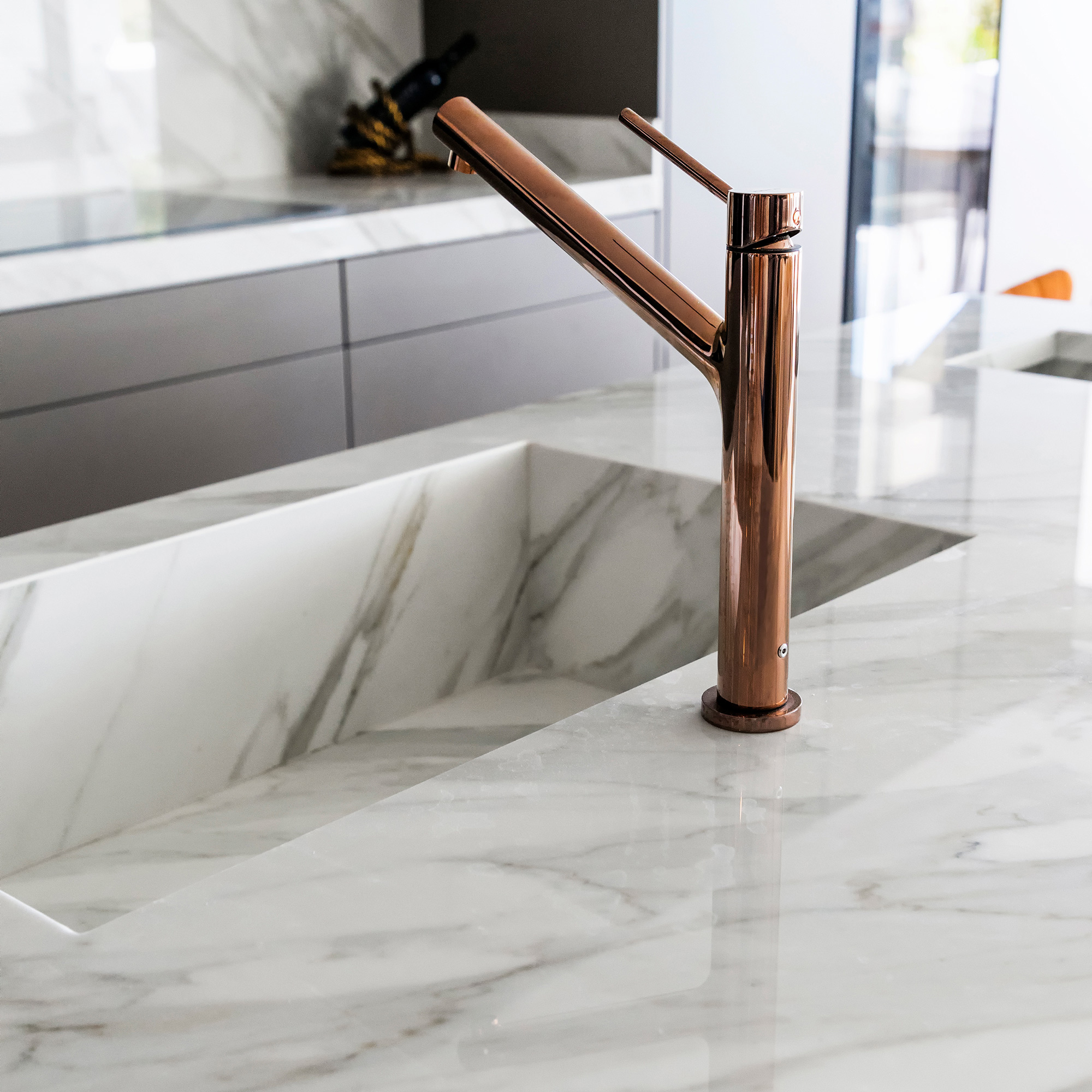
Next up, sintered stone surfaces – one of the newest kitchen trends to explore. While they are very similar to engineered stone, there are subtle differences that really are worth noting when it comes to choosing between the two.
'Sintered stone is made from natural stones such as quartz, porcelain, glass and other materials,' say Paramount Stone Specialists' experts. 'Once it has been established which materials will be used, they are granulated into fine pieces and mixed together.
'Compacting the minerals is done under extremely high pressure, removing any air gaps,' they continue. 'Sintering is a process where the slab is subjected to extremely high temperatures for a set time. The slab should be fused together, leaving one solid and non-porous material.'
Pros of sintered stone surfaces

There is a reason why sintered work surfaces are becoming an increasingly popular option amongst those looking into how to choose kitchen worktops.
'Sintered stone surfaces are highly resistant to scratches, making them ideal for high-traffic areas like kitchen worktops and bathroom vanity units,' explains Ross Stewart, senior sales manager for Neolith UK. 'Sintered stone can withstand extreme temperatures, it does not burn in contact with fire, nor does it emit smoke or toxic substances when subjected to high temperatures in daily use.
'The virtually non-porous nature of sintered stone surfaces prevents absorption of liquids, ensuring that spills can be easily wiped away without staining,' continues Ross.
Pros of sintered stone surfaces:
- Longevity: 'If you take care of your worktop, it should last approximately 25 years,' say Paramount Stone Specialists.
- Highly durable, being scratch, stain and impact resistant as well as slightly more heat resistant than engineered stone.
- Suitable for indoor and outdoor use, making them perfect for outdoor kitchens.
- Hygienic: 'Our surfaces help prevent the proliferation of bacteria, promoting a cleaner, healthier environment in both kitchens and bathrooms,' says Ross Stewart.
- Sustainable: 'Neolith sintered stone is crafted with premium natural raw materials, finer and purer than traditional ceramics or porcelains, and can be recycled at the end of its long lifespan,' explains Ross Stewart.
Cons of sintered stone surfaces
If you are keen to avoid any kitchen worktop mistakes, it is important to take the time to look at some of the downsides of sintered stone.
Cons of sintered stone work surfaces:
- More expensive than quartz work surfaces
- More variation in pattern due to higher levels of natural materials
FAQs
What is the difference between solid surfaces and engineered stone?
Unlike engineered stone work surfaces, solid worktops are made using a larger proportion of synthetic materials, including mineral dust (usually marble) a range of plastic resins and pigments for colour.
One of the best known solid surfaces is Corian, introduced by DuPont in the 1960s.
While they can be a beautiful option for modern kitchen ideas, making it possible to achieve a seamless finish, solid surfaces tend not to be quite as resistant to heat, scratches and stains than composite stone, although this does, to some degree, depend on the quality of the product you choose.
Is engineered stone more expensive?
If you are wondering how much does a new kitchen cost, you will no doubt be keen to know what kind of figures you will be looking at if you choose engineered stone.
Engineered stone might be more expensive than timber and laminate work surfaces, but it is slightly cheaper than sintered surfaces. Both require professional installation.
In conjunction with choosing new worktops, think about how they will work alongside your kitchen cabinets.
Get the Ideal Home Newsletter
Sign up to our newsletter for style and decor inspiration, house makeovers, project advice and more.

Natasha has been writing about everything homes and interiors related for over 20 years and, in that time, has covered absolutely everything, from knocking down walls and digging up old floors to the latest kitchen and bathroom trends. As well as carrying out the role of Associate Content Editor for Homebuilding & Renovating for many years, she has completely renovated several old houses of her own on a DIY basis.
-
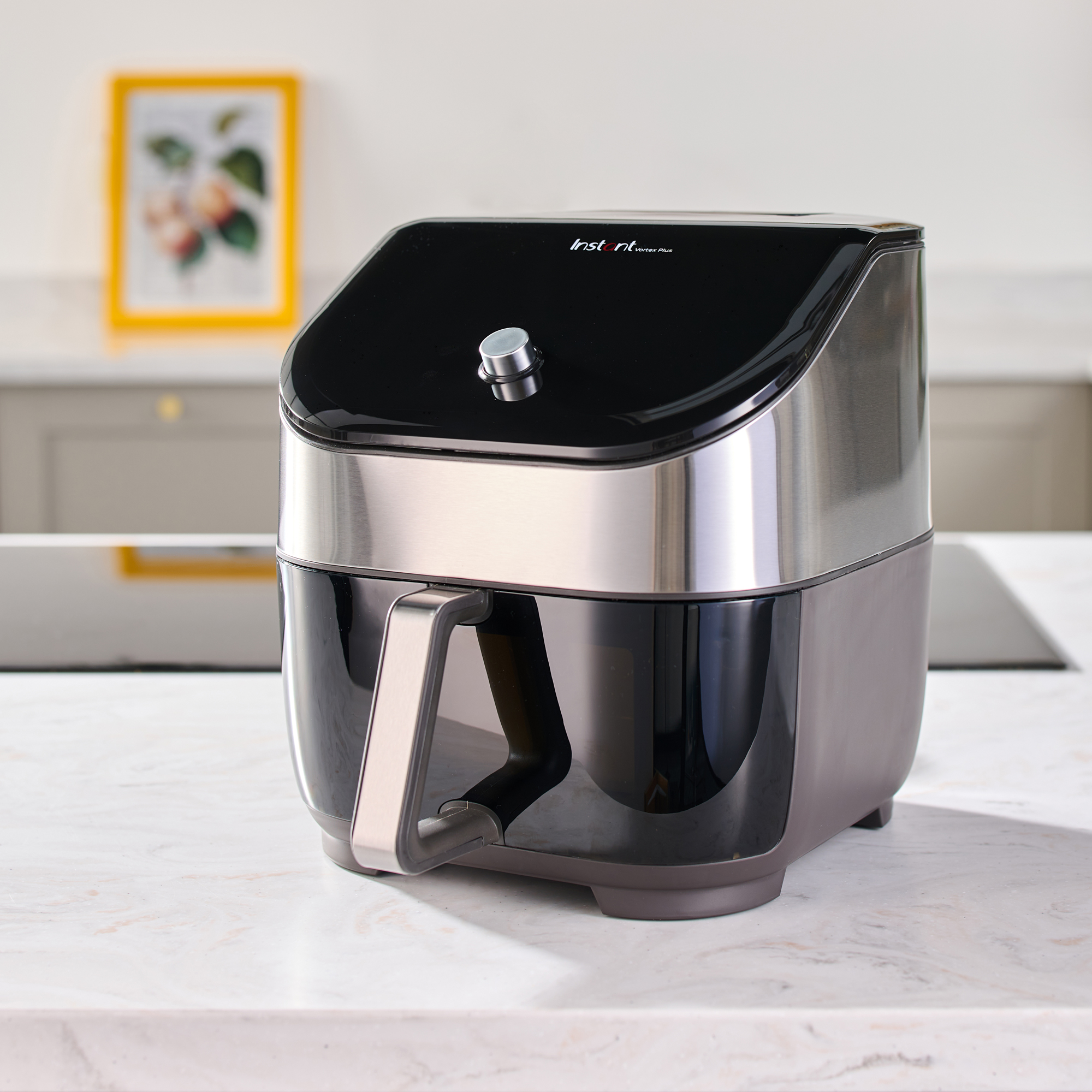 Should an air fryer be on display in a kitchen or hidden away? This is why I always keep my small appliances on the worktop
Should an air fryer be on display in a kitchen or hidden away? This is why I always keep my small appliances on the worktopAre you on team display or neatly hidden away? Share your opinion in the comments
By Rebecca Knight
-
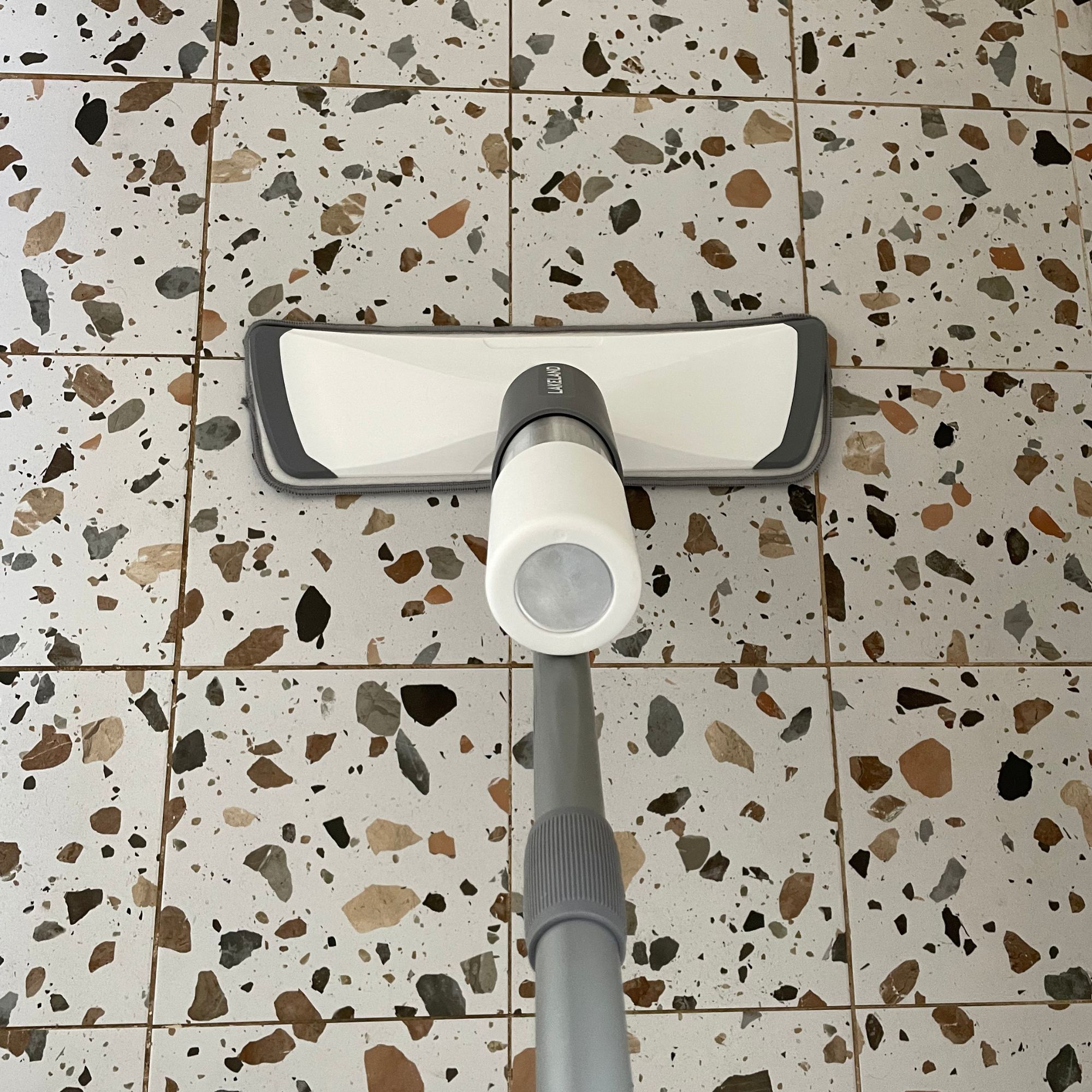 Experts warn that these 5 mopping mistakes are making your floors dirtier — and damaging your floors in the process
Experts warn that these 5 mopping mistakes are making your floors dirtier — and damaging your floors in the processThis is how to keep them clean and avoid costly damage
By Lauren Bradbury
-
 Move over, fences – dead hedges are the wild and wonderful alternative your garden will love and they're easier to build than you'd think
Move over, fences – dead hedges are the wild and wonderful alternative your garden will love and they're easier to build than you'd thinkThe perfect eco-friendly solution for small gardens
By Kayleigh Dray